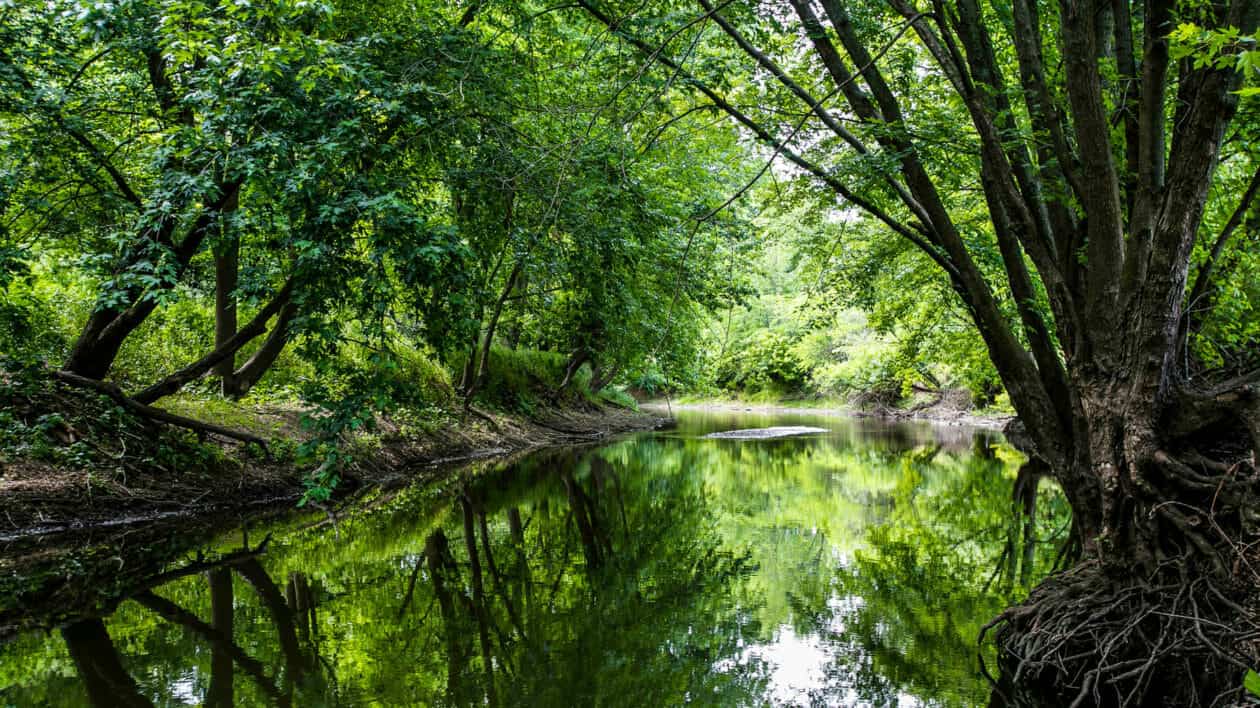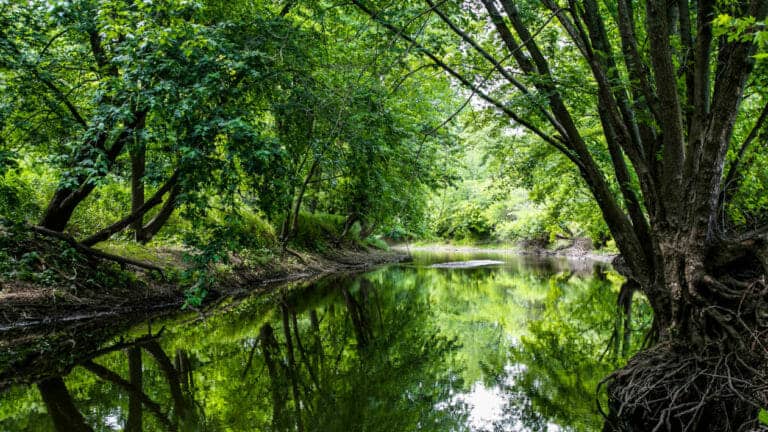The Mackinaw River on Franklin Demonstration Farm in central Illinois. Photo © Cristina Rutter for The Nature Conservancy
In the heart of the Midwest’s Corn Belt, a family farm is experimenting with ways to keep its nearby rivers clean. On a farm in the heart of Illinois, nearly a decade and a half of experiments are unfolding.
For six generations, the land’s owners, the Franklin family, have farmed their 250 acres along the Mackinaw River—a tributary to the Illinois River, which itself joins the Mississippi. The Mississippi has long struggled as fertilizer runoff from farms polluted its water and fed dead zones downstream in the Gulf of the Mexico. Since 2014, the Franklin family has worked with researchers from The Nature Conservancy, the University of Illinois at Champaign-Urbana and elsewhere to test ways to reduce the amount of fertilizer washing into local rivers.
Krista Kirkham, an aquatic ecologist for TNC in Illinois, talks about discoveries made there. A version of this article ran in Nature Conservancy magazine’s Spring 2018 issue, which focused on how food can be produced more sustainably. Read more food and conservation stories here. — NCM Krista Kirkham Krista is the assistant aquatic ecologist for […]
Full article: Can a Wetland Help a Farm?
More about wetlands, ecosystems and remediation:
We’re in a global water crisis. It’s time to turn to nature
Bringing the Chesapeake Bay to Baltimore’s Inner Harbor
Coastal wetlands can significantly reduce property damage due to hurricanes
Beekeeping preserves wetlands in Algeria
Explore the Largest Coastal Restoration Project Completed In Louisiana’s History
Water Warriors and Other People Stories
- Meet the Las Vegas teens facing Western drought head on
- No birdsong, no water in the creek, no beating wings: how a haven for nature fell silent
- Kindergarteners release trout into Feather River
- Navy Whistleblower Pursued Fraud Case Against Red Hill Contractors, Unsealed Documents Show
- CDFW Biologist Honored Following Historic Salmon Reintroduction Project
- Dr. Laurel Larsen’s stint tackling the wicked problems ends



